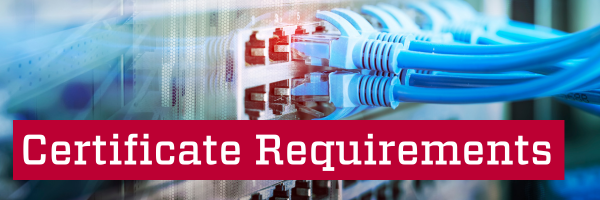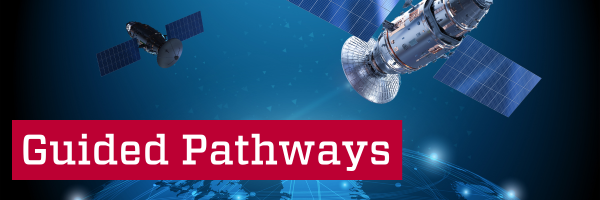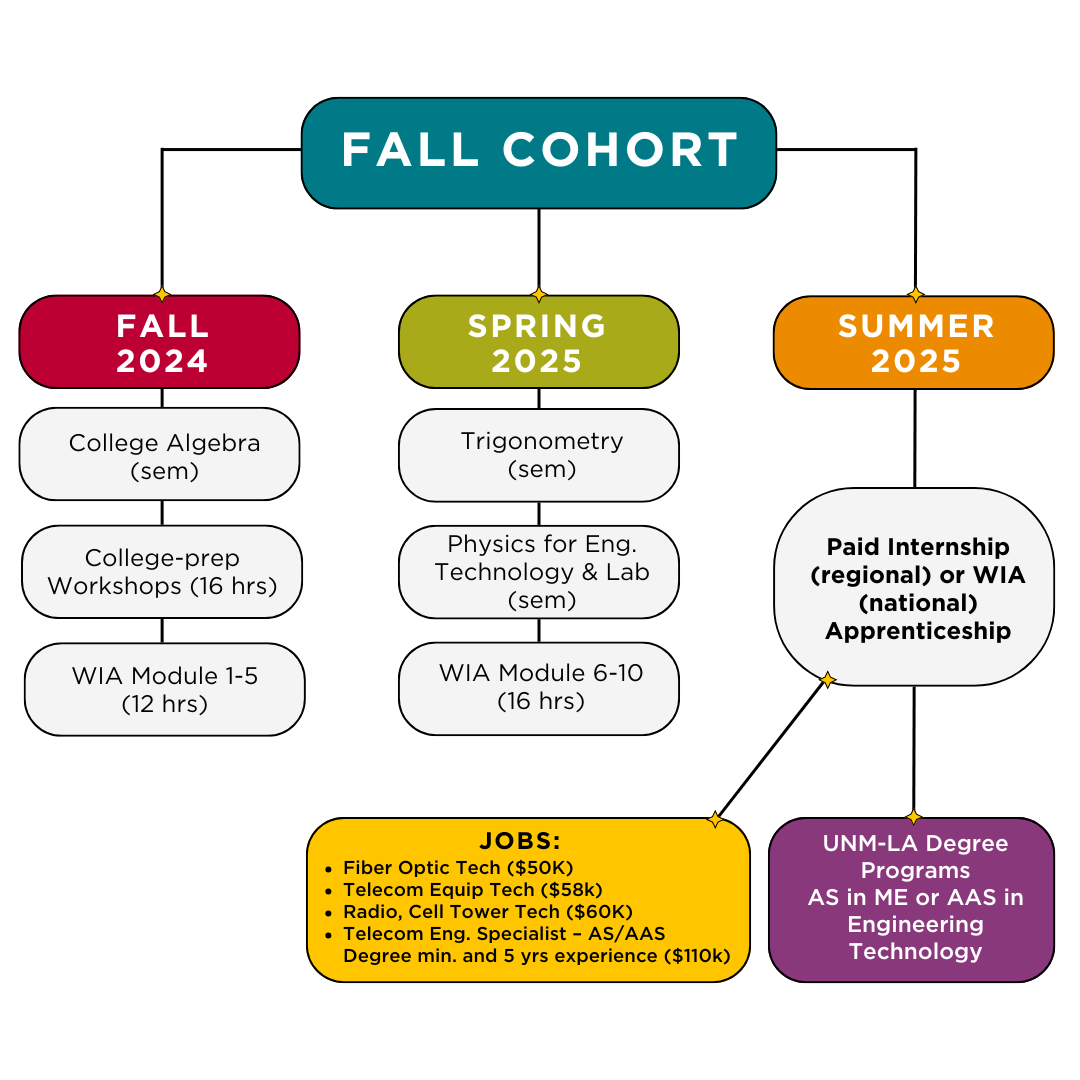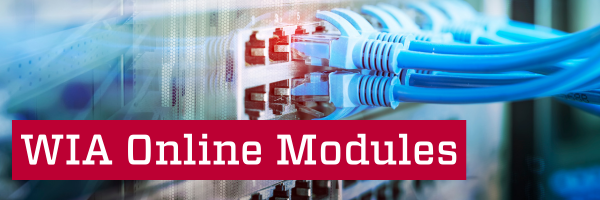
Broadband-5G Certificate at UNM-Los Alamos
Now beginning Sept 3, 2024
Full scholarships are available for a limited time!
Click here to register!
Overview | Tuition Assistance | Certificate Requirements
WIA Online Modules
Guided Pathways
Overview
Are you interested in a rewarding career in Telecommunications? Training is at your fingertips — where the gateway to a fulfilling career in telecommunications awaits you! At UNM-Los Alamos, we are excited to present a cutting-edge Continuing Education Certificate program in collaboration with the Wireless Infrastructure Association (WIA).
Immerse yourself in a learning experience that not only equips you with the essential skills for success but also offers unique opportunities for hands-on training. Our program goes beyond traditional education, providing access to paid internships and national apprenticeships to strengthen your journey into the dynamic realm of Wireless and Fiber Optic Careers.
In partnership with WIA, a recognized leader in the telecommunications industry, our certificate program is designed to meet the evolving demands of the field. Whether you are aiming to enter the exciting world of 5G technology, wireless infrastructure, or fiber optics, our comprehensive curriculum is tailored to empower you with the knowledge and expertise needed to thrive in these innovative sectors.
Embark on this valuable certificate with us and position yourself at the forefront of the workforce of the future. The UNM-Los Alamos Broadband-5G Certificate program is your key to unlocking a rewarding and dynamic career in the ever-expanding field of
telecommunications.
This is a two-semester program; a paid internship will commence after the two semesters are completed.
Be a part of the workforce in an industry of the future!
DATE: TBD, Fall 2024
COST: $5,000
Full scholarships are available for a limited time. Contact aattanasio@unm.edu for more information.
Tuition Assistance
TANF IET Grant Workforce Innovation & Opportunity Act (WIOA) Vocational Rehabilitation Veterans

6 Pre-engineering technology UNM-LA Credit and Continuing Education classes AND 10 WIA Modules.
Math classes are prerequisites and can be completed the semester before.
Required UNM-LA Credit (credits) and Continuing Education classes (CEU):
- Math Bootcamp I: Pre-algebra to Algebra (FYEX 1010), (4 CEU's), 8 weeks online— This course is designed to prepare students for college-level mathematics courses by strengthening key mathematical concepts. It addresses the transition from high school to college and incorporates strategies needed for problem solving using pre-algebra through algebra concepts.
- Intermediate Algebra (Math 1215), (4 CEU's), 8-weeks online — Intermediate Algebra: A study of linear and quadratic functions, and an introduction to polynomial, absolute value, rational, radical, exponential, and logarithmic functions. A development of strategies for solving single-variable equations and contextual problems.
- College Algebra (Math 1220), (3 credits), semester in-person or online — College Algebra: The study of equations, functions, and graphs, reviewing linear and quadratic functions, and concentrating on polynomial, rational, exponential, and logarithmic functions. Emphasizes algebraic problem-solving skills and graphical representation of functions.
- Trigonometry (Math 1230), (3 credits), semester in-person or online — A study of plane trigonometry including the definitions of the fundamental trig functions using right angle triangle and unit circle approaches. Trig functions of any real number will be evaluated and the functions graphed along with their transformations. Trigonometric identities will be developed and demonstrated including multiple angle identities and identities developed from them. Inverse trigonometric functions will be developed and used to solve trigonometric equations. Trigonometric applications will be solved using right angle trigonometry and the laws of sines and cosines. Trigonometric methods will be applied to complex numbers and the use of 2D vectors and vector dot products.
- College-prep Workshops, FYEX 1110, (1 credit), 16 hours hybrid — This is an immersive experience designed to help students in their transition to university life. Students will make lasting connections, engage with notable faculty in intimate class settings, and learn the ropes of UNM-LA. Participants in the program can anticipate:
- Small class sizes led by engaging instructors, fostering an optimal environment for learning.
- Personalized guidance from Student Services and Academic Support Center, providing invaluable tips and strategies to smooth your transition into university life.
- Mentorship from Academic Coaches empowers students to navigate a spectrum of academic, career, social, and personal concerns.
- Involvement in diverse activities and events that serve as a gateway to understanding academic departments and university resources.
- Workshops include: Project Teams (STEM), Humanities, College Readiness Skills, Nutrition and Cooking, Mental Health & Well-being, Field trip, and more.
- Physics for Engineering Technology (algebra-based) plus Lab. (6 CEU), online class/in-person lab — An algebra-based introduction to physics and treatment of physics in Newtonian mechanics. Topics include an overview of kinematics and dynamics in one and two dimensions, basics of conservation laws, energy, momentum, motion, and equilibrium. Industry specific topics include electricity and magnetism, optics, and wave functions. Lab involves hands-on broadband/5G/fiberoptic experimentation and work with industry specific equipment. Prerequisite College Algebra (Math 1220), Recommended Trigonometry (Math 1230).
- Module 1: Wireless 101 is designed to familiarize you with the practical aspects of wireless communication systems and their business and industry applications. This course introduces the basics of radio frequencies and the underlying principles that apply to today’s cellular systems. You'll learn current industry practices for cell sites, hardware components at a typical cell site, and the RF measurements necessary for cellular networks.
- Module 2: Macro Site Fundamentals introduces foundational theories related to macro tower planning, construction, and troubleshooting. The course introduces several types of cell site infrastructure and identifies the role of key stakeholders in the wireless industry. You will learn various parts of a cell site, how to read and interpret RF plumbing diagrams, the role of typical hardware components at the top and bottom of the tower, and co-siting techniques for multiband and multi-technology cell towers. Topics also include uplink and downlink, new-generation cell towers such as Centralized RAN (C-RAN), and the tower construction process.
- Module 5: RF Safety and Awareness, online, emphasizes the importance of personal safety when working in an RF environment. OSHA requires business owners to maintain a comprehensive RF program, which includes training for everyone who works on or near wireless and broadcast communication sites. Failure to comply can result in personal injury, fines, and lawsuits. Workers who perform tasks on rooftops, towers and other structures where cellular antennas and other RF-generating devices are present may be at risk of exposure to hazardous levels of RF radiation. Understanding these risks and how to properly mitigate them is crucial to the safety of all wireless personnel. You'll learn how to develop a comprehensive RF safety plan that protects you as well as the public, who may be unaware of the risks associated with RF exposure.
5G Ecosystem
- Module 1: Your Future with 5G covers why we need 5G, the current limitations of 4G technology, and who is creating 5G and how. You will also identify avenues for professional and personal involvement. You'll review user applications, new kinds of business created, and current use cases. This module provides an understanding of what's next for jobs and training and how our workforce will be impacted by the four to five million jobs created by the new technology, and how these advancements could influence the learner personally.
- Module 3: 5G Ecosystem Overview covers how the 5G rollout will be instrumental across industries, from retail, healthcare, entertainment, automotive, and manufacturing to tech and real estate. This technology will enable connected cars and autonomous driving; smart cities with connected planning, transportation, and infrastructure, and enhancement in connected healthcare, industrial internet of things, and smart factories. This course provides an overview of 5G technology, what to expect, and its impact on businesses and consumers. To reap the benefits of 5G when it's deployed, you must know how to plan for this new wave of automation. You'll learn about common myths, review current data analytics, and prepare to achieve the performance improvements the technology will enable.
- Module 4: Cell Site Design and Planning, instructor led, presents the fundamentals of macro tower and RF designing concepts. This course will review macro cell site evolution. You'll learn how to read engineering data sheets and follow RF Plumbing Diagrams. You will also study:
- Hardware components found at a typical macro tower and their functionality
- Reading an engineering datasheet for various hardware and how they are connected by analyzing the RF Plumbing diagrams.
- Co-siting techniques will be explained using multiple examples and theories associated with Diplexers, Tower Mounted Amplifiers and Antenna Tilting mechanisms
- The role of Remote Radio Head (RRH) and how the top of the cell tower is evolving to accommodate new advancements in technology.
In-Building Wireless Solutions
- Module 1: DAS and Small Cell Basics. Distributed antenna systems (DAS) and small cells are addressing the number one challenge faced by the cellular industry — how to provide more capacity and better coverage where macro tower service is insufficient due to limited radio resources. This course provides a system-level understanding of several types of DAS and Small Cell architecture. It introduces hardware components used in a typical indoor and outdoor DAS system, their advantages, and limitations. Examples of RF plumbing diagrams are used to explain signal flow for indoor and outdoor applications. The course also introduces the Citizens Broadband Radio Services (CBRS) framework and provides an overview of CBRS use cases, including private LTE and 5G networks. Designed for all audiences, this course is essential to understand how 5G and future generations must rely on DAS and small cells for coverage and capacity solutions.
- Module 2: Wi-Fi Integration, instructor led. Wi-Fi is a radio technology that enables high-speed internet access without being tied by cord or cable to an internet connection. The world’s biggest carriers already recognize Wi-Fi as a business-critical, strategic technology. Wireless communication networks rely on Wi-Fi for offloading to relieve the congested mobile data networks with additional capacity from unlicensed Wi-Fi spectrum. From basic RF theory and regulatory requirements to implementation of WLAN devices, this course will cover the latest in 802.11 technologies in a practical way. Learn basic 802.11 wireless networking terminology and functionality, as well as engineering concepts and business practices.
Wireless Broadband Infrastructure
- Module 2: Fiber for Wireless Infrastructure, instructor led, demonstrates how 5G wireless networks and fiber optic networks complement each other, together offering a more cohesive broadband experience for both fixed and mobile applications. The quality and reliability of the 5G wireless network depends on the fiber network carrying traffic to and from the 5G small cells. This course covers the role of fiber at existing macro towers (backhaul and fronthaul to remote radio head) and the basics of capacity planning. It defines fiber optic, 5G wireless networks and the role of fiber in small cell densification to explain how they complement each other. The curriculum reviews the Fiber-to-the-Antenna (FTTA) concept and the role of fiber in the future cell site with massive MIMO and active antenna.
- Module 3: Line Sweeping and PIM Testing, instructor led, provides a technical understanding of various line sweeping measurements. Coverage and capacity are extremely important for mobile communication, and they are essential with the quality installation of hardware components at cell sites. Macro towers and in-building DAS solutions require the proper installation of antennas, cables, connectors, and other inline components. The return loss and passive intermodulation (PIM) measurements are crucial techniques that verify the quality installation of cellular networks. Learning for testing includes return loss, VSWR, distance-to-fault (DTF), insertion loss, and PIM. The curriculum will provide step-by-step procedures for efficient cell site troubleshooting and an introduction to measurement units and required hardware for cell site technicians and tower climbers.


Register here!
For more information, please contact aattanasio@unm.edu.

